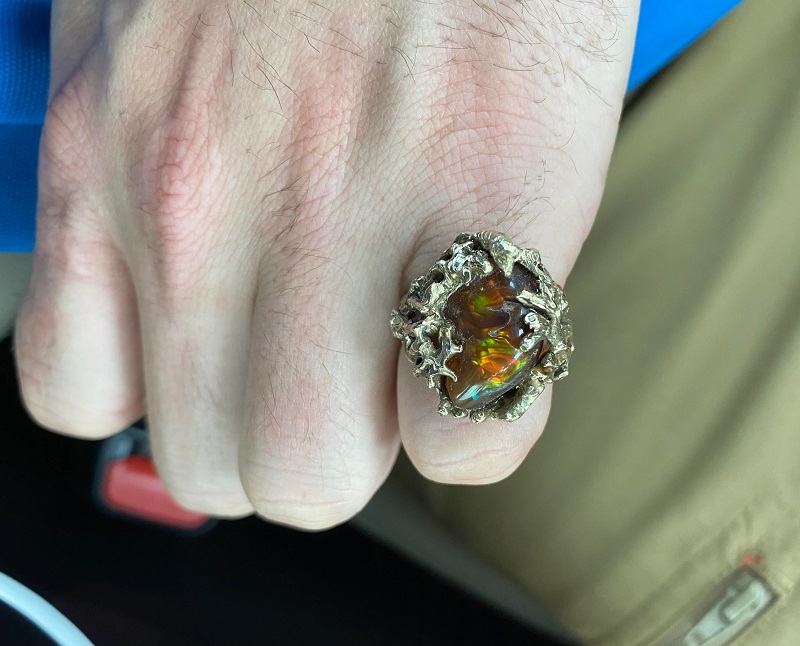Shopping
Shopper shares astonishing value of unassuming ring picked up at thrift shop: ‘I likely would have walked right past it’

A unique ring caught the eye of one thrift shopper, and it turned out to offer a lot more than just a statement piece. The shopper posted a photo of the find in the subreddit r/ThriftStoreHauls with the caption, “$7 for a 10k [gold ring].”
Other thrift enthusiasts congratulated them on the stellar deal. “That’s awesome – I likely would’ve walked right past it,” one said.
“Gorgeous!! Good for you!!” another wrote.

One person joked, “I’ll give you $8 for it! Seriously great find!!”
The OP explained that they confirmed the ring’s authenticity at a pawn shop. While they thought it was an opal, other Redditors thought it was more likely to be a fire agate or a Mexican opal.
One commenter, whose husband is a goldsmith, chimed in with more thoughts: “He says it appears the ring was specially designed and built for the stone, which makes it a unique one of a kind piece and it’s very good quality. Good find!”
This kind of hidden gem — in this case, a literal gem — is one of many reasons that secondhand enthusiasts love thrift shopping. From finding money tucked away in a bag to stumbling across luxury items with incredible resale value, choosing to thrift means that a shopping trip might not just be a good deal — it can actually be profitable.
Thrift shopping is also a more affordable way to stock up on essentials, from clothing to kitchenware to furniture. And with items marked down as much as 99% off their value, the savings add up. Regular secondhand shoppers save an average of $1,700 per year just by buying used.
Thrifting is also much better for the planet. The fast fashion industry, which churns out an oversupply of cheaply made, mass-produced items, generates nearly 100 million tons of textile waste every year. Not even 1% is ever recycled into new clothing, and 87% of it ends up in landfills or in the ocean instead.
In many places, these clothes are incinerated to make room for more waste, a process that releases toxic chemical pollutants linked to sickness outbreaks.
But the more the fast fashion industry’s harmful practices are exposed, the more shoppers are turning to thrifting to keep their dollars out of that toxic cycle. According to a report from Statista, the secondhand clothing market is forecast to hit a value of $84 billion by 2030, putting it on track to outgrow fast fashion.
Join our free newsletter for easy tips to save more, waste less, and help yourself while helping the planet.







:max_bytes(150000):strip_icc()/roundup-writereditor-loved-deals-tout-f5de51f85de145b2b1eb99cdb7b6cb84.jpg)


